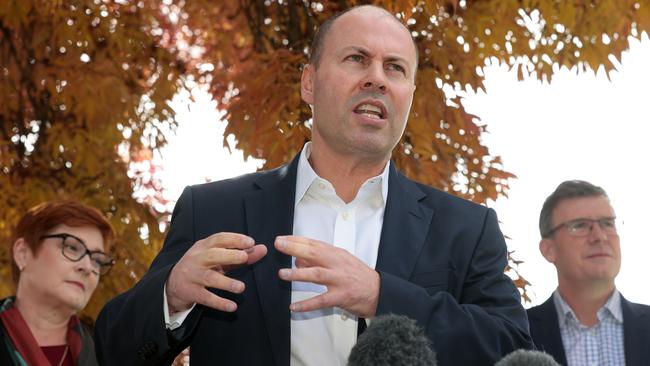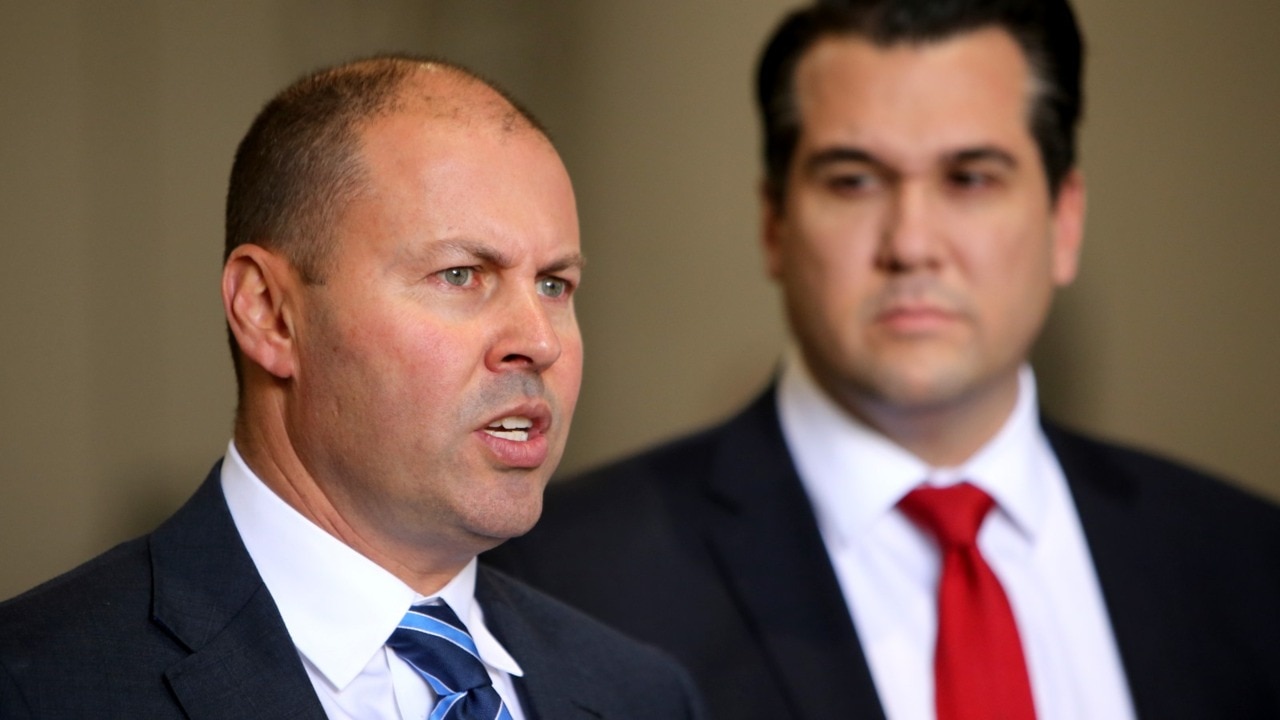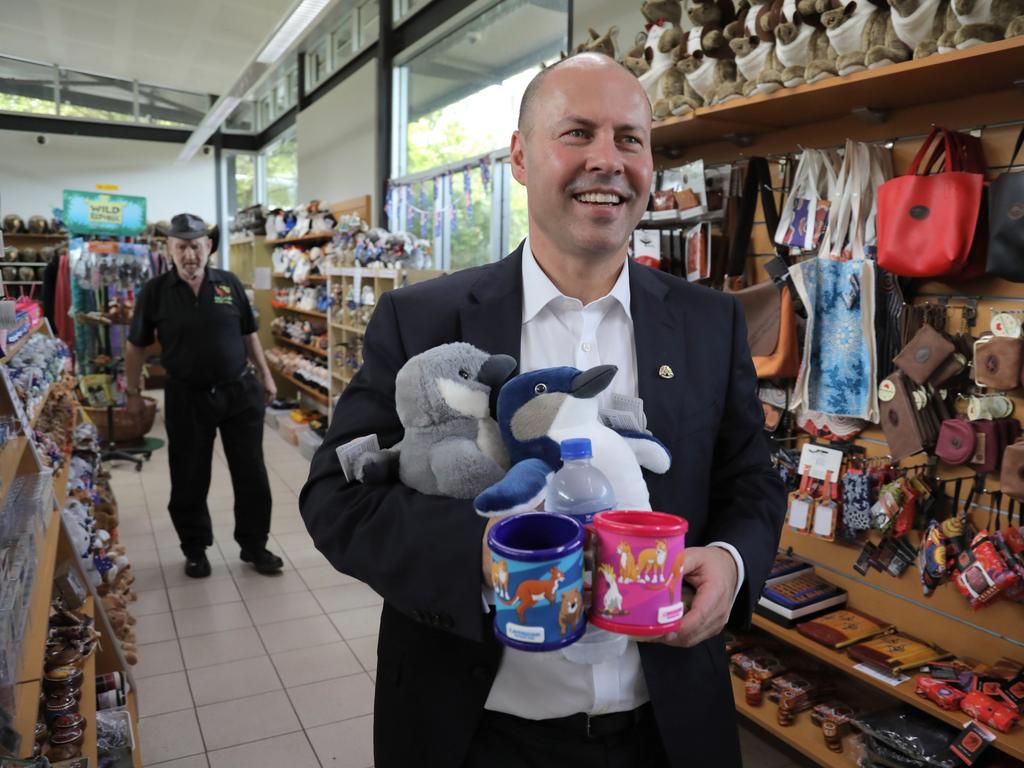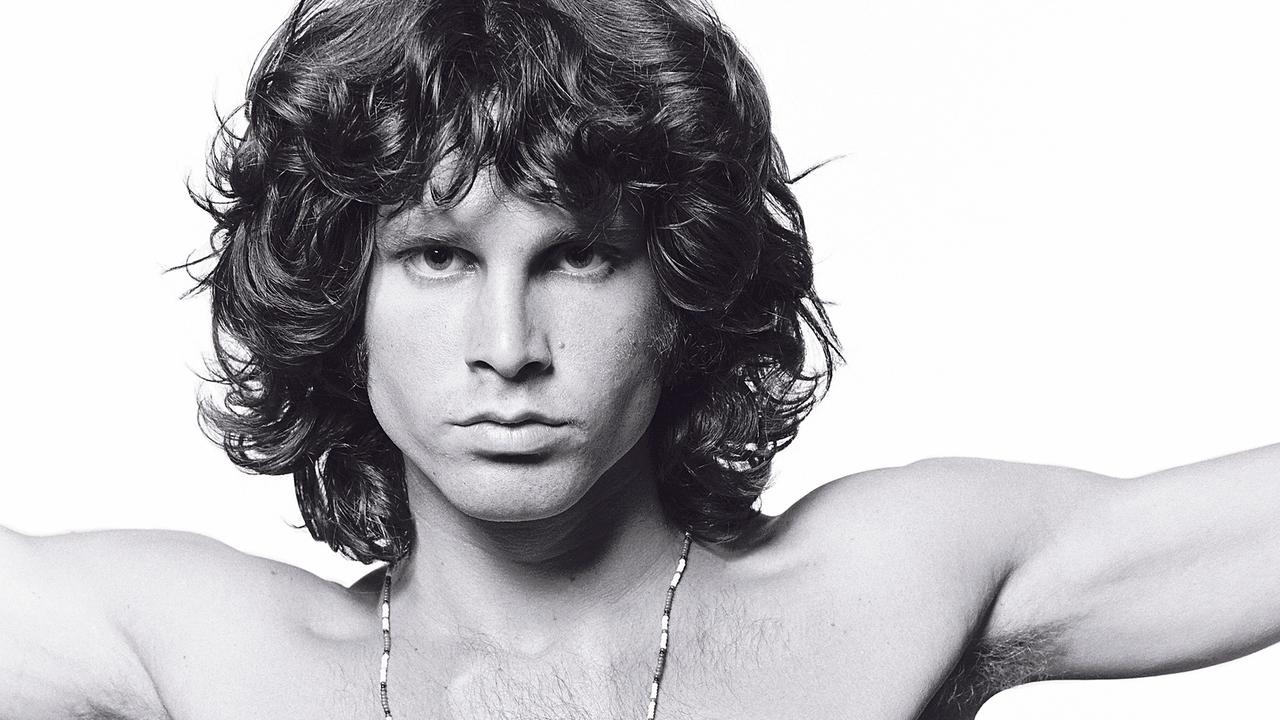Budget 2021: More jobs return in ‘red hot’ labour market
More than 90,000 people have come off welfare since JobKeeper ended, quashing fears of an unemployment spike.

More than 90,000 people have come off welfare since the JobKeeper scheme ended in March, quashing fears the withdrawal of government wage subsidies would push up unemployment, and delivering major savings to the budget bottom line.
Josh Frydenberg said the figures — in which at least 30,000 people came off welfare benefits in the week ending April 30 on top of 63,000 in the first weeks of the month — showed ending JobKeeper was the right decision.
The stronger-than-predicted labour-market recovery means the JobKeeper scheme will cost the nation $12.5bn less than originally estimated. The strong recovery also saw the jobless rate fall to 5.6 per cent in March compared with Treasury estimates in the mid-year economic review of 7.5 per cent.
The stronger jobs figures come as Deloitte Access Economics predicts next Tuesday’s budget will reveal a $100bn boost to the bottom line thanks to a “red hot” economic recovery. However it cautions a daunting budget repair task remains for future governments. The Treasurer said on Sunday that while 93,000 people were off benefits and job advertisements were at record highs, there was still work to do to secure the post-COVID recovery.
“Ending JobKeeper was the right decision for the economy, for the labour market and the budget,” he said. “The upcoming budget will continue to prioritise jobs to get even more Australians back into work.
“While this is encouraging, there is still much to do. The Morrison government’s economic support is continuing through tax cuts, business investment incentives and record spending on skills and infrastructure.”
Last October’s budget estimated JobKeeper would cost $101.3bn, but the reduction in people needing wage subsidies means the scheme will ultimately cost $88.8bn. There were 650,000 fewer people on JobKeeper in the March quarter than previously estimated. This represents about 200,000 more people in work than was predicted four months ago and the continued drop in the number of people on welfare in April suggests the labour market has remained resilient and has strengthened since the end of JobKeeper.
The figures and the latest unemployment rate quash Treasury predictions that the withdrawal of JobKeeper would lead to between 100,000 and 150,000 people ending up on unemployment queues.
As the economic recovery has gathered pace, Mr Frydenberg has maintained a focus on creating jobs over fiscal repair as he has prepared next week’s budget. He revealed last week his intention to push the unemployment rate below 5 per cent before attempting to begin fiscal repair, arguing that repairing the economy would repair the budget.
Deloitte’s latest budget monitor estimates the 2020-21 underlying cash deficit will come in $31bn better than Treasury predicted in December, to $167bn, as the rapid labour market recovery and stronger-than-anticipated business profits — underpinned by booming iron ore exports — boosts the tax take.
The better starting point flows into future budgets, with Deloitte calculating the deficit will hit $87bn next year, a $22bn improvement. The combined improvement over the forward estimates to 2023-24 adds up to $100bn, still leaving a deficit of $48.5bn by the end of the forward estimates.
Deloitte partner Chris Richardson said while the picture was substantially better than expected mere months ago, the pandemic had still left the government’s finances in a deep hole.
“As an example, the deficit is an eye-waveringly $95bn larger than the matching projections for 2021-22 that Treasury issued in late 2019,” he said.
Mr Richardson agreed with the Treasurer’s pro-growth fiscal strategy, saying it was “absolutely the smart thing to do”.
He said record-low borrowing costs made the much larger debt pile less of a burden than would have been the case before the pandemic.
“We are still in a phase of spending money to make money, and I think it makes sense to use the budget to get to a fully repaired economy,” Mr Richardson said. “It costs more in the near-term, but it saves more in the long term.”

Mr Richardson warned, however, that while “repairing the economy does indeed do the vast bulk of the heavy lifting”, his analysis showed the federal government may eventually need to find the equivalent of $40bn in annual savings to get the budget back into balance.
The veteran budget-watcher said the hit to migration through the pandemic, paltry expected inflation and wages growth, and a higher interest bill than would have otherwise been the case would leave a sizeable budget repair task. “Australians do need to realise that there’s an eventual bill to pay — it isn’t nearly as large as many seem to fear, but nor is it nothing,” Mr Richardson said.
“And the politics here are horrendous. If you’d like a yardstick, the last budget that tried to save a similar share of national income was in 2014, and it is widely seen as having torpedoed the fortunes of Tony Abbott and Joe Hockey.”
He included a range of mooted spending measures in his estimates, including an extra year of tax cuts for low- to middle-income earners and an extension to HomeBuilder.
The budget is expected to include an aged care package of about $10bn over forward estimates, but Mr Richardson said meeting all the recommendations in this year’s aged care royal commission would cost that much in one year alone.
With unemployment running nearly two percentage points under Treasury’s most recent forecasts, and real GDP likely to have returned to pre-pandemic levels, the budget will include upgrades to Treasury’s economic outlook. Deloitte’s assumptions were for real GDP to grow 1.1 per cent in this financial year, before accelerating to 4.1 per cent in 2021-22. The mid-year update had forecast 0.75 per cent growth in 2020-21, and 3.5 per cent in the next.






